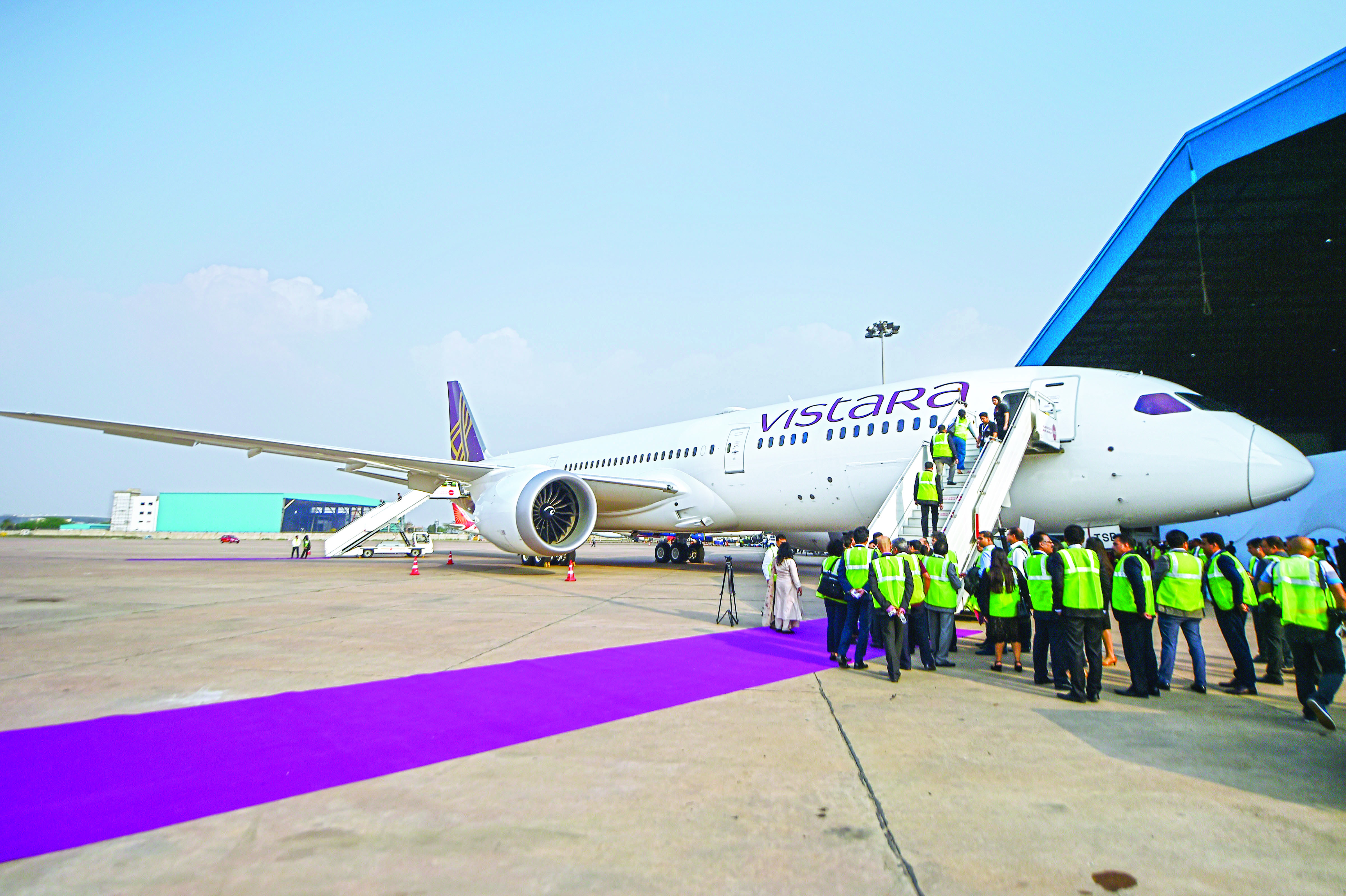Vistara to fly into sunset on Nov 11

New Delhi/Singapore: Vistara, the nearly decade-old Indian airline, is preparing to bid farewell on November 11, 2024, as it merges with Tata Group-owned Air India. This significant merger, announced in November 2022, is moving closer to completion following the Central government’s approval of Singapore Airlines’ (SIA) Rs 2,058.5 crore Foreign Direct Investment (FDI) in the Air India Group. This strategic move will make SIA a 25.1 per cent stakeholder in one of the world’s largest airline conglomerates.
On Friday, SIA confirmed that the Indian government had approved its proposed FDI into the enlarged Air India Group, marking a crucial milestone in the merger process. With this regulatory approval in hand, Air India CEO and MD Campbell Wilson announced that the transition of Vistara’s aircraft and crew to Air India is scheduled to begin on November 12, 2024.
Vistara, a joint venture between Tata Sons (51 per cent) and Singapore Airlines (49 per cent), has been a prominent player in the Indian aviation sector since it began operations in January 2015. The airline has grown its fleet to 70 aircraft and served 50 destinations, capturing a 10 per cent share of the domestic market as of July 2024. Despite its growth and service reputation, Vistara has been operating at a loss, a factor that likely contributed to the decision to merge with Air India.
As part of the merger process, Vistara’s last flight under its brand will take off on November 11, 2024. Starting September 3, 2024, customers will no longer be able to book Vistara flights for travel on or after November 12. From that date, Vistara’s aircraft will be operated under the Air India banner, with bookings redirected to Air India’s website.
In a statement, Vistara assured its customers that operations would continue as usual until November 11, and the transition would be managed smoothly. The airline has also prepared a comprehensive set of Frequently Asked Questions (FAQs) to assist passengers during this period of change.
The approval of SIA’s Rs 2,058.5 crore FDI is the final significant regulatory clearance required for the merger.
This deal had already passed several regulatory checkpoints, including approval from the National Company Law Tribunal (NCLT) in June 2024, the Competition Commission of India (CCI) in September 2023, and Singapore’s competition regulator, the Competition and Consumer Commission of Singapore (CCCS), which gave a conditional nod in March 2024.
As the merger draws near, Wilson emphasised that while Vistara’s flight numbers will change to Air India codes post-November 12, the aircraft, schedules, and operating crews will largely remain unchanged until early 2025.
The merger between Vistara and Air India will create one of the largest airline groups globally, with a strong presence across all key market segments, including full-service, low-cost, international, and domestic routes. The combined entity, which also includes Air India Express and AIX Connect (formerly AirAsia India), will operate over 200 aircraft and serve millions of passengers annually.
Singapore Airlines and Tata Sons have reiterated their commitment to supporting the growth of the Air India Group, which they believe will play a pivotal role in India’s rapidly expanding aviation market.
The merger is also seen as a critical step in SIA’s multi-hub strategy, strengthening its presence in South Asia.
Vistara CEO Vinod Kannan highlighted that the merger aims to offer passengers more choice through a larger fleet and a more extensive network, thereby elevating the overall travel experience.
The merger will affect over 23,000 employees across Air India and Vistara, with about 600 non-flying staff likely to be impacted. Efforts are being made to provide job opportunities within the broader Air India Group and other Tata companies.
For customers, Vistara’s loyalty program will be integrated into Air India’s program, with personal data transferred securely during the merger process.
In a message to its customers, Vistara assured that all personal data would be handled with the highest level of confidentiality.



